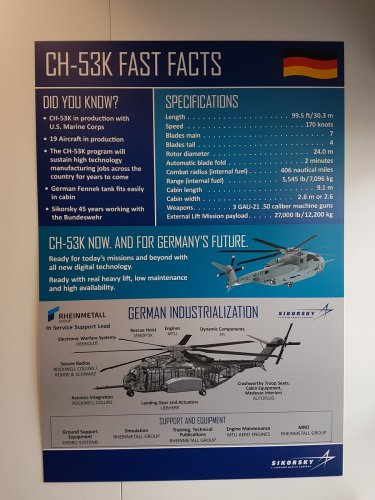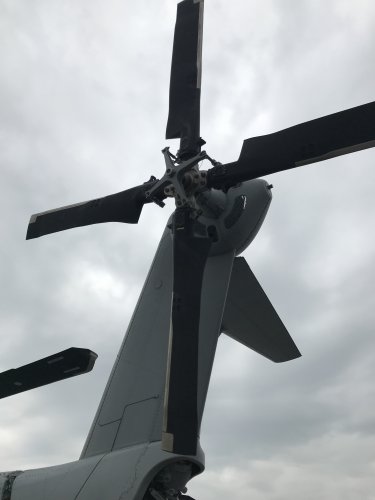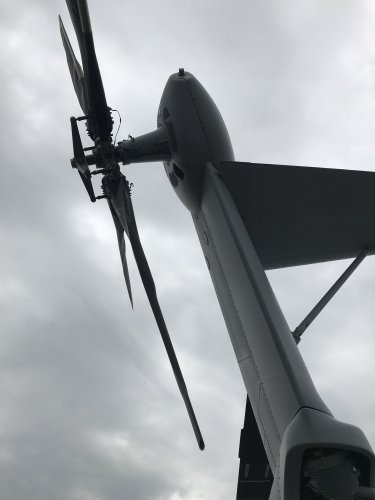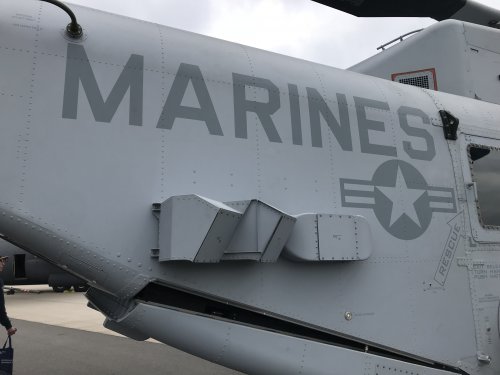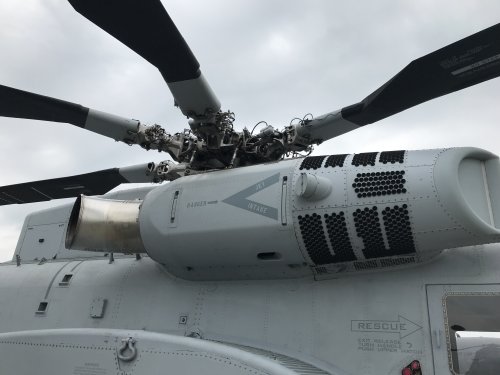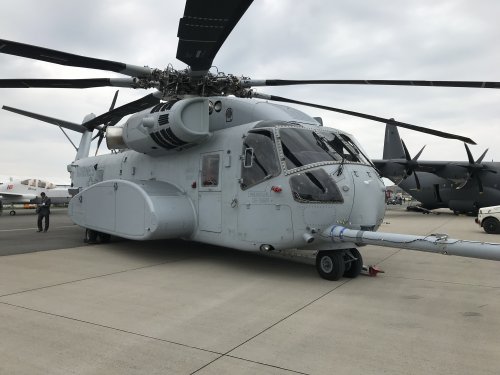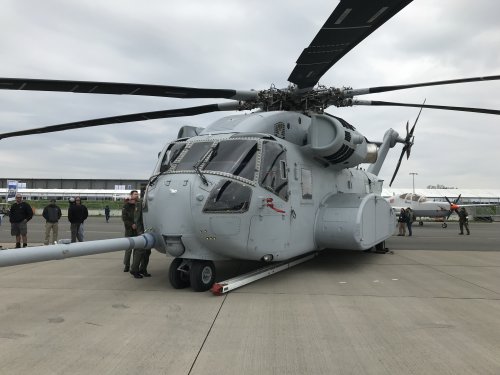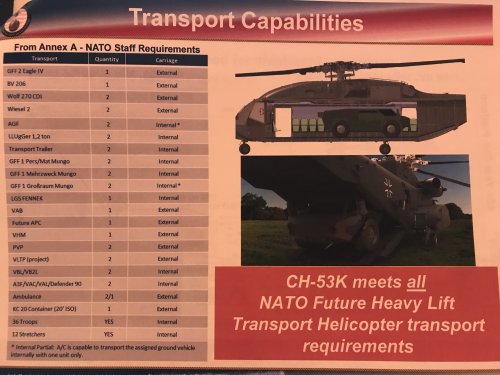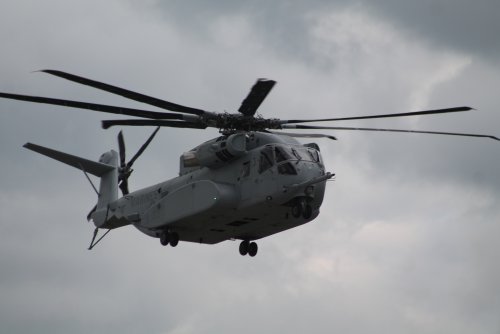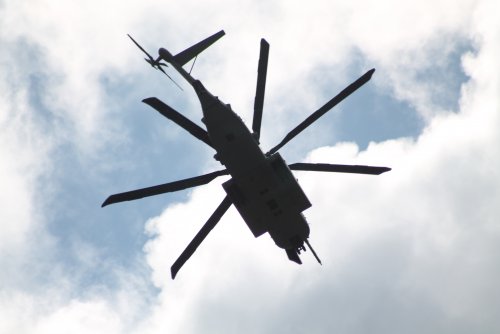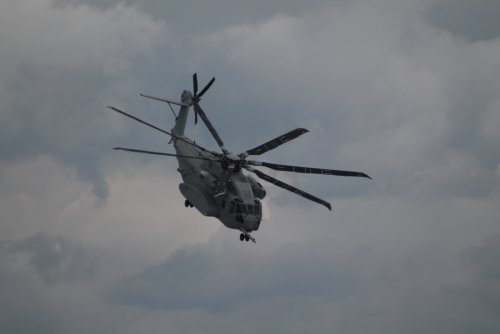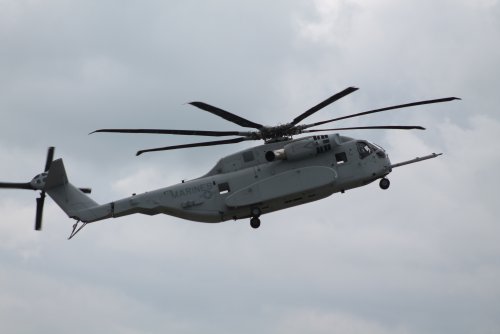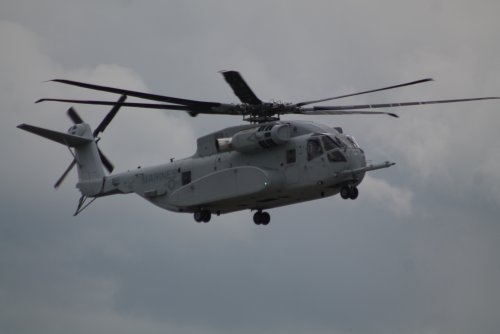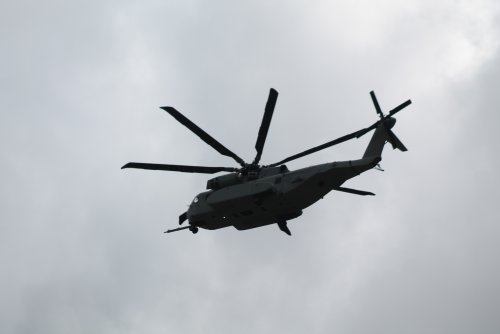"Germany seeks pricing for 41 CH-53K King Stallions"
17 May, 2016 BY: James Drew Washington DC
Source:
https://www.flightglobal.com/news/articles/germany-seeks-pricing-for-41-ch-53k-king-stallions-425387/
17 May, 2016 BY: James Drew Washington DC
Source:
https://www.flightglobal.com/news/articles/germany-seeks-pricing-for-41-ch-53k-king-stallions-425387/
The US government is preparing a response to Germany’s letter of request for pricing and availability of 41 heavy-lift Sikorsky CH-53K King Stallion helicopters to begin replacing the 80 G-models the country currently operates.
Berlin is considering both the CH-53K and the Boeing CH-47 Chinook to meet its heavy vertical lift requirement, and the US Marine Corps is keen to take advantage of the better pricing that could be achieved by adding a sizable King Stallion order at the front-end of the production ramp.
The new model, which first flew in October, has twice the max gross take-off weight of the legacy CH-53G operated by the Luftwaffe at 40t (88,000lb) with external loads compared to 19t (42,000lb).
US Naval Air Systems Command’s (NAVAIR) H-53 programme manager (PMA-261) Col Henry Vanderborght said at the Navy League Sea-Air-Space conference in Washington DC that adding foreign military customers achieves better production pricing, improves interoperability between allies and lowers shared upgrade and sustainment costs.
“The marines are buying 200 aircraft. Add another roughly 50 aircraft [and] that’s 25% more and tremendous savings for the US government in terms of production costs,” says Vanderborght on 16 May. “Beyond production, think about sustainment. Any new software upgrade, any new capability we need: if a foreign partner wants that too, we could share the development costs.”
Vanderborght and Sikorsky CH-53K chief Mike Torok believe that Germany is the nearest term opportunity to add an international customer, and the next would be Israel, which operates 23 CH-53s.
The CH-53 users group includes the US Marine Corps, Germany, Israel and Japan, and those operators meet twice yearly to discuss sustainment, support and upgrades. Those nations are kept well informed about the CH-53K's progress.
Torok says Germany has not settled on an official programme timeline yet. In January, Flightglobal reported that Germany ideally wants to sign a deal in 2018 for initial deliveries beginning in 2022. Sikorsky says discussions have ranged from “40 to 60 or so” aircraft and a request for proposals is expected next year.
“We knew all along once we started flying and making this pivot to production that the interest would start peaking and we’ve gotten some requests from some other countries who are not traditionally CH-53 drives,” he says. “The stuff everyone wants to carry is getting heavier, so the basic aircraft have just run out of capability, especially in very hot conditions where you have limitations."
Boeing is upbeat about the Chinook’s prospects in Germany, but as the CH-53K programme gathers momentum in anticipation of initial operational capability with four combat-ready aircraft in 2019, the competition is expected to be heated.
Vanderborght says the CH-53K is not a one-for-one replacement because of its outsized lifting capacity, and fewer aircraft means less overall force structure and personnel. Torok says Lockheed Martin-owned Sikorsky expects to build anywhere up to 300 aircraft and is preparing to add Germany at the front end, if needed.
NAVAIR recently put Sikorsky on contract for long-lead parts for the first two aircraft of Lot 1, and is working toward a Milestone C decision that will enable low-rate production to start in 2017.
Two aircraft are already flying, five are in testing, and another eight are at various stages of assembly. Sikorsky completed an internal production readiness review in March, ahead of a formal government review planned for later this year.
All 200 USMC aircraft are expected to be in place by 2029 to achieve full operational capability, with production ramping up to 24 CH-53Ks per year in beginning in 2025.

